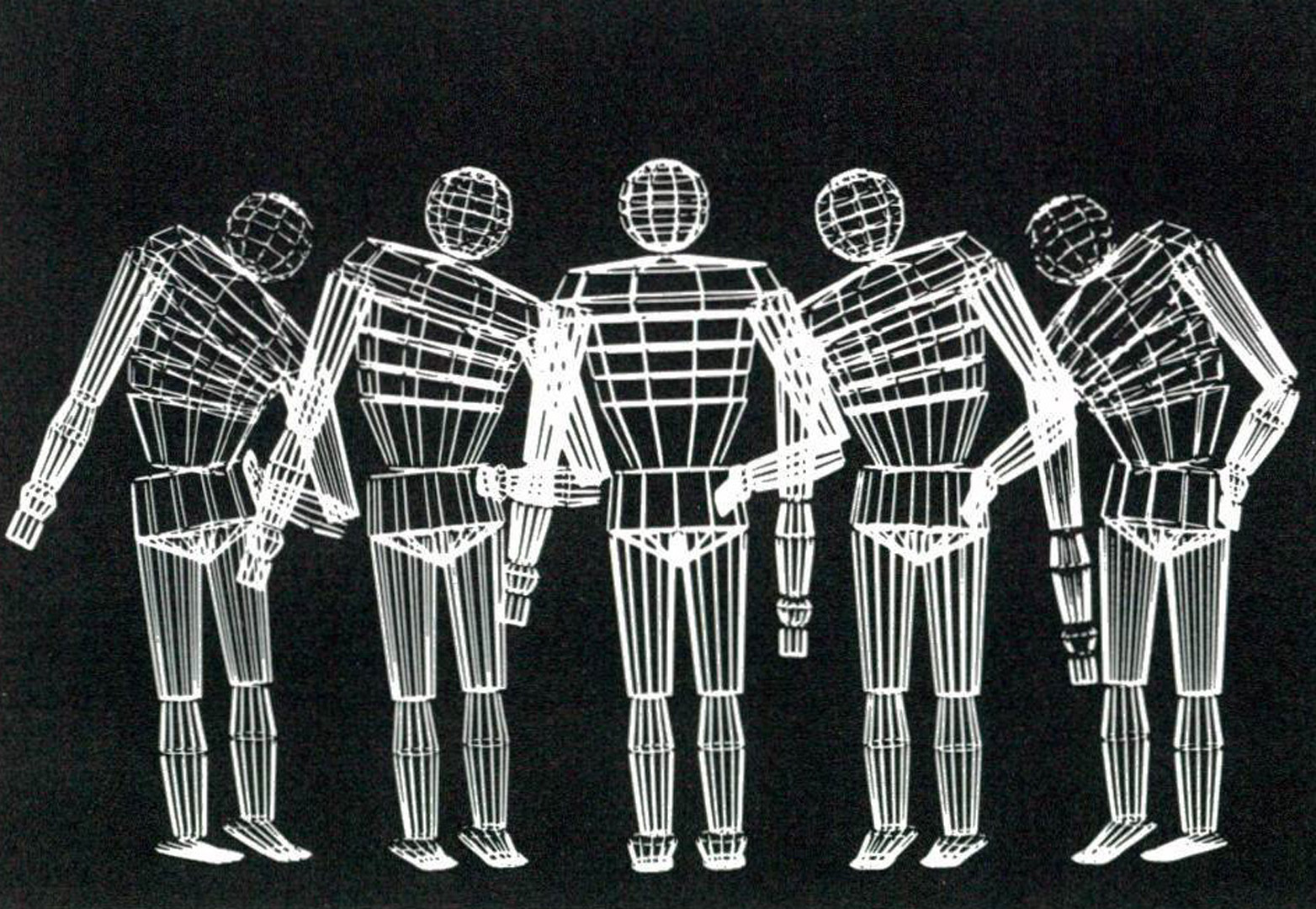“GRAMPS – A graphics language interpreter for real-time, interactive, three-dimensional picture editing and animation” by O’Donnell and Olson
Conference:
Type(s):
Title:
- GRAMPS - A graphics language interpreter for real-time, interactive, three-dimensional picture editing and animation
Presenter(s)/Author(s):
Abstract:
GRAMPS, a graphics language interpreter has been developed in FORTRAN 77 to be used in conjunction with an interactive vector display list processor (Evans and Sutherland Multi-Picture-System). Several of the features of the language make it very useful and convenient for real-time scene construction, manipulation and animation. The GRAMPS language syntax allows natural interaction with scene elements as well as easy, interactive assignment of graphics input devices. GRAMPS facilitates the creation, manipulation and copying of complex nested picture structures. The language has a powerful macro feature that enables new graphics commands to be developed and incorporated interactively. Animation may be acheived in GRAMPS by two different, yet mutually compatible means. Picture structures may contain “framed” data, which consist of a sequence of fixed objects. These structures may be displayed sequentially to give a traditional frame animation effect. In addition, transformation information on picture structures may be saved at any time in the form of new macro commands that will transform these structures from one saved state to another in a specified number of steps, yielding an interpolated transformation animation effect. An overview of the GRAMPS command structure is given and several examples of application of the language to molecular modeling and animation are presented.
References:
1. Gund, P., Andose, J.D., Rhodes, J.B., Smith, G.M. “Three-Dimensional Molecular Modeling and Drug Design.” Science, 208, 1425-1431, (1980).
2. Tsernoglou, D., Petsko, G.A., McQueen, J.E., and Hermans, J. “Molecular Graphics: Application to the Structure Determination of a Snake Venom Neurotoxin”. Science, 197, 1378-1381, (1977).
3. Newman, W.M., and Sproul, R.F. Principles of Interactive Computer Graphics, 2nd Edition, McGraw-Hill Book Company, New York, (1979)
4. Bernstein, F.C. et al. “The Protein Data Bank: A Computer Based Archival File for Macromolecular Structures.” J. Mol. Biol., 112, 535-542 (1977).
5. Allen, F.H., Kennard, O., Motherwell, D.S., Town, W.G., Watson, D.G. “The Cambridge Crystallographic Structural Data File.” J. Chem. Doc., 13, 119 (1973).
6. Defanti, T. “The Digital Component of the Circle Graphics Habitat.” Proceedings National Computer Conference, (1976).
7. Burtnyk, N. and Wein, M. “Computer Generated Key Frame Animation.” J. Soc. Motion Picture and Television Engineers, 80, 3, 149-153, (1971).
8. Harrison, S.C., Olson, A.J., Schutt, C.E., Winkler, F.k., and Bricogne, G. “Tomato Bushy Stunt Virus at 2.9 Angstroms Resolution.” Nature, 276, 368-373, (1978).
9. Badler, N.I., O’Rourke, J. and Kaufman, B. “Special Problems in Human Movement Simulation.” Computer Graphics, 14, 3, 189-197, (1980).
10. Muybridge, E. The Human Figure in Motion, Dover Publications, New York, (1955).
11. Burtnyk, N. and Wein, M. “Interactive Skeleton Techniques for Enhancing Motion Dynamics in Key Frame Animation.” Communications of the ACM, 19, 10, pp. 564-569, (1976).




